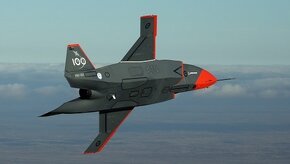Don't get me wrong, I am a big fan of the ghost bat, with much the same end point in mind. I just see more of an iterative approach to its capabilities.
I see its strategy a little differently.
My view is that Ghost Bat gen one is a test platform designed specifically to develop an AI brain that can autonomously operate an airframe with minimal human input (so, observe its environment, fly itself without crashing, take general orders, execute) and integrate with multiple platforms (ground station, F35, P8, E7 etc). So its a fancy computer strapped to a basic airframe. Nothing more.
It seems it has achieved that objective quite well, and this is what sets it apart from every other drone out there. As an added bonus, it is fairly close to being capable of performing as an autonomous ISR platform in a slightly upgraded and hardened form, which looks like what the gen twos later this year will be. We could kick off a production line of these very soon, so next year. Perhaps a simple helfire style missile could be attached for testing purposes.
I can see this being easily upgraded into a combat platform using the same AI computer. It needs a bigger airframe to carry the weight, software integration for AIM9/120 or JSM missiles, plus all the pylon infrastructure for missile hook up (which is a lot of stuff and heavy in its own right). But all of that is existing technology and would be a relatively straightforward gen three design. We could perhaps see prototypes in 12-18 months, with the above gen two production line switching over in say two-3 years time.
I think it is reasonable to expect that the gen twos (ISR) and gen threes (missile trucks) will exist and operate together.
If I align this to the Governments overarching crawl, walk, run strategy: the current gen one Ghost Bat is crawl (develop the AI), walk is the gen two (basic useful functionality that can be field deployed now), run (beefing it up with an attack capability).

